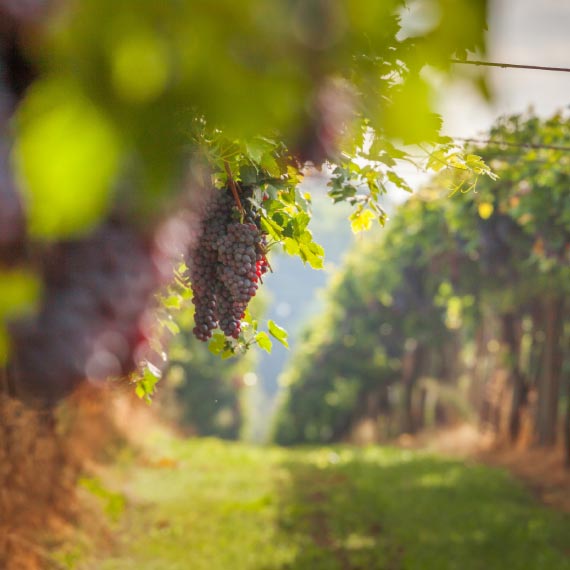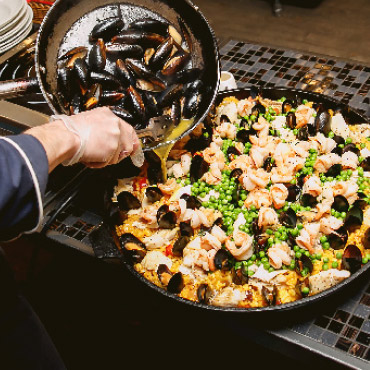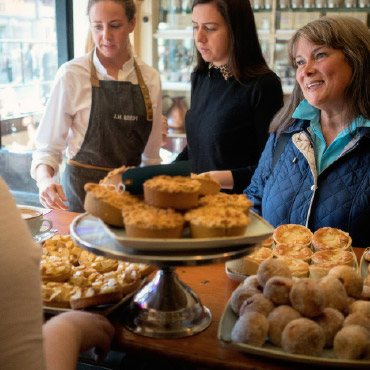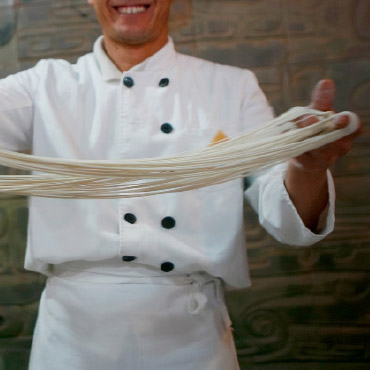roll up YOUR SLEEVES
Many of Collette’s culinary travel experiences put you at the heart of where a meal is made — in the kitchen. From exclusive cooking classes and culinary demonstrations to breaking bread with locals, we seek out the truly immersive culinary experiences. These are a few of our favorite ways to savor the flavors of the world.
HOME-HOSTED MEALS
Be welcomed into the home of a local family where you’ll share a delicious meal and experience a destination’s culture firsthand. Make lifelong friends as you savor authentically prepared food and drink that you won’t find in any restaurant, bar, or café. See why food is the international language when you pull up a seat to the table.
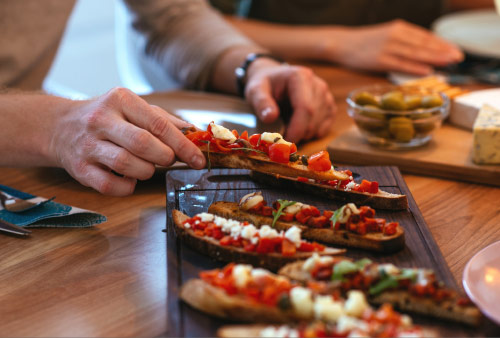
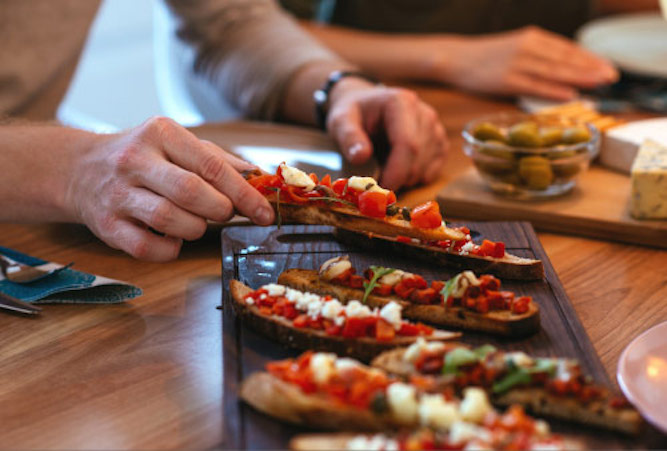
Home-Cooked MEAL IN ITALY
While traveling through Italy, you’ll learn that much of the cuisine is heavily dependent on the region in which it’s being prepared. Tuscan and Umbrian cuisine has agrarian roots, and meals consist of what’s farmed or foraged from its fertile land. You can learn more about this regional cuisine when you are welcomed in to the home of an Italian family. Enjoy a home-hosted meal as you swap stories and share laughs.
Embark on one of our tours to the resplendent countryside of Italy.
UNIQUE CULINARY EXPERIENCES
Sometimes, you yearn for more than a meal in a restaurant or a drink in a café. As travelers and foodies ourselves, your desire to taste a country’s true flavor is something we understand. From off-the-beaten-path excursions to centuries-old ceremonies, we seek to engage all your senses with our unique culinary experiences. If your palate and imagination are looking for an adventure, here are some appetizing options:
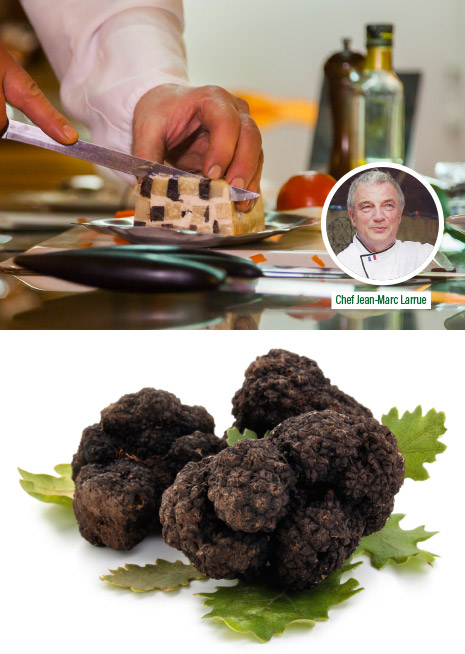

HUNTING FOR A DECADENT DELICACY:
The French Truffle
For some culinary experiences, the hunt makes the experience more memorable. In France, you can travel through the forests in the early morning hours to find a European delicacy — the truffle. Using the heightened sense of smell of a trained dog or pig, travelers are led to truffle-producing trees where this delicious mushroom-like delicacy can be found. Après hunt, you’ll marvel at the landscapes said to have inspired van Gogh, Picasso, and Renoir.
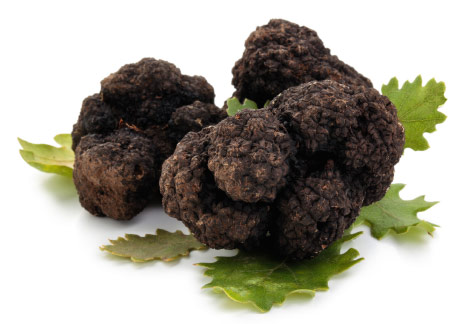
Chef and truffle-hunting lead, Jean-Marc Larrue, is passionate about tracking down this coveted natural food.
This thrilling culinary quest is just one example of the cooking experiences you may have while visiting France.
DISCOVER WHY MAINE IS KNOWN
FOR lobster
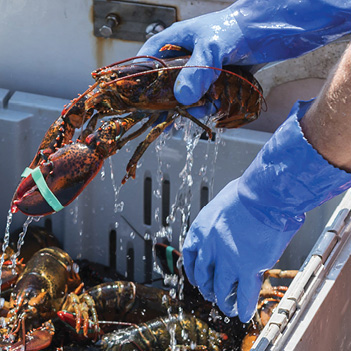
When in Maine, indulging in lobster is a must. On your way to Bar Harbor, make a stop at a traditional lobster shack for a taste of fresh lobster, caught just steps away. Then, find out what life is like for local lobstermen and see traps hauled out of the water as you cruise the waters on a traditional Downeast-style lobster boat. Experience this New England foodie experience on Roaming Coastal Maine.
SPAIN’S CULINARY OUTLIER:
Catalan Cuisine
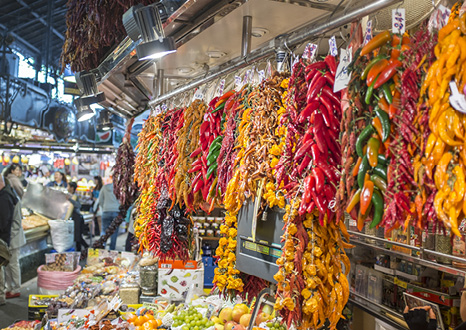
Catalan cuisine offers its own distinctive set of flavors with its proximity to the Mediterranean coast and Pyrenees Mountains. The food and drink here can best be described as surf and turf with a twist. Imagine yourself exploring La Boqueria, the city’s largest and oldest open-air market to experience the sights, sounds and flavors of Catalan culture and cuisine.

COOKING CLASSES
Sharpen your skills in the kitchen with an engaging cooking class. You’ll learn the secrets behind authentic, regional cuisine while you exercise your culinary muscles. Whether you consider yourself a master chef or just a beginner, you will come away with some useful culinary tips and tricks.
CREOLE OR CAJUN?
All About New Orleans Cuisine
During an interactive cooking class in America’s foodie city, New Orleans, Louisiana, you’ll discover the nuances in Creole and Cajun cuisine. While the two cuisines use similar ingredients, you’ll learn they are distinctly different.
Creole cuisine is often referred to as “city food.” It traces back to 18th century New Orleans. Creole blends influences from around the world and is considered high-class. Complex sauces and dishes with higher-priced ingredients are Creole.
Cajun cuisine is often referred to as “country food.” Its origins date back to the Acadian French colonists who settled in the region now called Acadiana. Cajun food is bursting with spices and most dishes start with the “holy trinity of Cajun cuisine” – onion, celery, and bell pepper. But with Cajun cooking, it really is all about the spice!
Learn the nuances of Creole and Cajun cuisine on one of our New Orleans tours.
COOKING DEMONSTRATIONS
If you’re mesmerized by a good cooking show, or always wondered what secret ingredient goes into your favorite dish, we have a treat for you. You’ll get exclusive access to local chefs who will demonstrate exactly how they work their culinary magic. Watch, learn, and be amazed by regional professionals.
COOKING WITH
Nature’s Bounty in the Azores

In the Azores islands, the autonomous region of Portugal, you’ll savor tropical fruits, a seemingly endless amount of seafood, and rustic cuisine. You’ll learn that in the Azores, the food relies on its quality and freshness, rather than on an elaborate blend of spices and flavors. And, as most of the recipes didn’t leave with the inhabitants who migrated out of the Azores in the 1900s, the food and drink here is still very much a mystery to the world.
You can discover the secrets of Azorean cuisine with an interactive cooking demonstration when you travel to Portugal and its islands.





